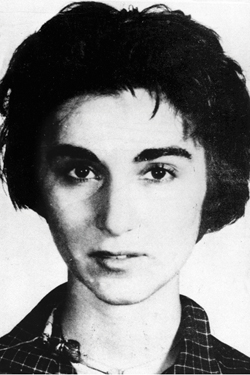
Of all the murders committed in New York City in 1964—636, to be precise—only that of Catherine Susan Genovese launched a whole subfield of social science: There had to be an explanation for why 38 people could see the 28-year-old barkeep attacked outside her Kew Gardens home and yet did nothing. The answer researchers came up with, the so-called bystander effect, was hardly reassuring in its implications for human nature. But now a new study says we may have gotten the lessons of Kitty Genovese all wrong.
Psychologists’ appetites for exploring what’s alternatively dubbed “the Genovese Syndrome” have been vast, producing hundreds of articles and books, most of them supporting the same grim equation—the more people watching something bad happening to another person, the less likely it is that any one of them will intervene. The new study, co-authored by Brown psychology professor Joachim Krueger, was different. The scientists pored over the existing research, looking closely at data from experiments modeling real-world crises. And what they discovered was surprising.
Yes, “people in a group do, individually, become less likely to help. It’s the volunteer dilemma: ‘If there are 7 billion people who could save the world, why should it be me?’ ” Krueger says. But drill down, and the picture grows more complex. In situations where there’s a clear threat—when someone is trying to extinguish a raging car fire, rather than merely struggling to change a flat tire—the bystander effect actually diminishes. “It’s counterintuitive,” says Krueger. “As the costs of a behavior become higher, you should be less likely to help.” Why that’s not so lies deep in our lizard brains. We know danger when we see it, and when we do, it induces higher levels of arousal and, therefore, more propensity to help. Even more heartening, when the costs of intervention are physical—a punch in the face or being run over by an oncoming train, instead of merely being late for work—“the bystander effect goes away,” Krueger says. And if the perpetrators are still on scene, the bystander effect can turn positive.
Here it’s worth noting that the New York Times coverage instrumental in enshrining Genovese’s murder in legend was less than completely accurate: There may have been just three eyewitnesses to the attack; most neighbors only heard portions of it; it’s possible none saw the final assault and murder. But the irony of Krueger’s analysis is that had there really been 38 people who watched Genovese get attacked, they would have been more likely to come to her aid, not less so.
Krueger’s work also corrects the misrepresentation of a more recent Queens tragedy, one inevitably depicted as a Kitty Genovese sequel. It wasn’t because of the bystander effect that more than two dozen people strolled past Hugo Alfredo Tale-Yax as he lay facedown on a Jamaica sidewalk in April 2010—they came upon him one at a time, and it was not clear whether Tale-Yax, who was homeless, was injured, sleeping, or passed out. He was, in fact, bleeding to death of stab wounds sustained while stopping a knife-wielding assailant from attacking a young woman. We don’t know if Tale-Yax was the only witness or one of many—but if it was the latter, we can now find relief in knowing (instead of hoping) that at least one among us would likely have reacted as he did.
Have good intel? Send tips to intel@nymag.com.